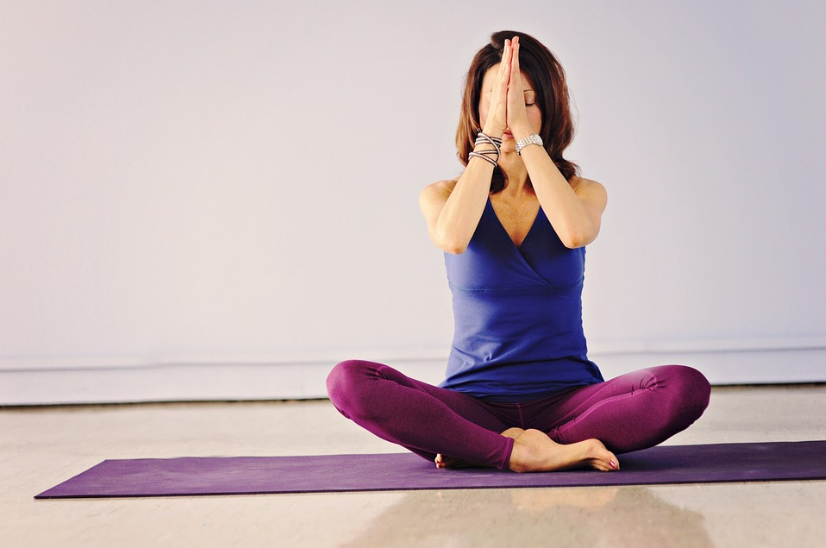Meditation And Yoga
Learn about the energy-boosting properties of meditation and yoga. and how to apply it in real life.

Selfpause Affirmation App
Download the app to get 1,000’s of affirmation meditations and everything you need to write, record and listen to your own.
Meditation and yoga practice are highly beneficial to the body. These practices combine physically demanding poses with controlled sustained breathing to help you relax and calm down. These methods also stimulate the parasympathetic nervous system, which places the body and mind in a relaxed state. Several studies have linked meditation and yoga to a reduction in stress, improved BDNF signaling, and increased energy levels.
Mindfulness of breathing

Practicing mindful breathing is a way to relax your mind and improve focus. The practice involves focusing only on the in and out breath. Breathing is one of the few processes in your body that you can control, so focusing on it can be deeply therapeutic. It can be practiced anywhere and should be practiced on a regular basis.
To practice mindful breathing, you should take a few minutes every day. Ideally, you should do it in the morning, before you have consumed any caffeine or other stimulant. Sitting or lying down is an ideal position. Once you have settled in, the next step is to notice any thoughts or sensations that may enter your mind. When they do, gently return your focus to your breath.
Practicing mindfulness has a variety of benefits, including reducing stress and anxiety and increasing our immune system. It may also help us manage gastrointestinal disorders and reduce our risk for obesity. It may also reduce pain and fatigue in people with chronic pain. It may also improve our ability to fight off illness.
One of the main benefits of practicing mindful breathing is that it can help us reduce stress. Studies show that psychological stress can cause serious health problems, and those who do not manage their stress do worse than their non-stressed counterparts. Furthermore, stress has been linked to increased risks of heart disease and cancer. Mindfulness of breathing can improve your sleep, reduce anxiety, and lower blood pressure.
Practice of mindfulness meditation takes time to become a habit, but once it does, it can help you deal with stress and improve your well-being. Practice it at regular intervals, such as twice a day. Ultimately, practicing mindfulness meditation will help you gain the ability to practice mindful breathing throughout your life.
Visualization of solar or lunar essences
Visualization of solar or lunar essences is a powerful way to cultivate a state of wellness. It is a great way to invite more intention into your life and to open your awareness to more possibilities. This practice will help you cultivate a more loving, compassionate, and balanced inner state.
Stress reduction

You can use yoga and meditation to relieve stress. You can find different yoga poses that range in difficulty, and you can also modify them if you are not comfortable with them. However, yoga and meditation are not the only ways to reduce stress. Other tools like self-care, affirmations, and getting enough sleep can help you cope with stress and anxiety.
Yoga helps you relax before you sit in meditation by stretching out the kinks that build up while you sleep. You can also reduce stress by doing slow, deep breathing exercises. One of the best yoga poses for stress reduction involves stretching your hips, where anxiety likes to lodge. By stretching out these muscles, you’ll release the tension that is the main culprit behind anxiety.
Yoga and meditation are not only good for the body and mind, but they also have numerous other benefits. These exercises can help you improve your body’s immune system, which is an important factor in managing stress. Furthermore, these techniques can help you become more adaptable to stress. You can also improve your social life and connect with your support network.
Yoga is also a great way to sleep soundly. Most people complain about their inability to sleep, but regular yoga practice will help you sleep better. Yoga also helps you focus. As you sleep better, your body will be more energized. Practicing yoga daily can make it easier for you to stay focused on work.
Yoga is also effective for treating PTSD. It has been found to reduce PTSD symptoms and improve the quality of sleep. Many veterans also benefit from yoga. It has helped improve their physical function and reduced their chances of substance abuse. In addition to these benefits, yoga is a great tool to use for stress reduction.
Yoga and meditation are complementary therapies for managing stress. Both promote mindfulness and create positive mental patterns. Regular yoga and meditation practice have been proven to relieve anxiety and improve sleep.
BDNF signaling

Meditation and yoga appear to increase BDNF signaling, which may help to reduce oxidative stress and promote brain health. However, there are several limitations to this research. BDNF is a neurotransmitter that regulates blood sugar and is associated with a number of health benefits, including decreased anxiety and depression.
The researchers measured the effects of mindfulness practice on BDNF and OXPHOS levels in men and women during a three-month meditation retreat. They found that BDNF levels increased after one session and OXPHOS decreased. They also found that participants who regularly practiced yoga exhibited significant reductions in their oxygen consumption during regular physical activity.
Further research is needed to explore the role of context in the regulation of BDNF signaling. In one study of 26 experienced meditators, BDNF levels were increased by three-fold and inversely correlated with self-reported levels of anxiety. Moreover, the CAR levels were also significantly higher, a sign of improved dynamic rhythmicity of the HPA axis and better stress resilience.
Studies have also found that the amount of BDNF in the blood is increased when participants engage in a yoga retreat. It has also been found that these retreats increase the participants’ mindfulness, which was related to an increase in BDNF levels. The retreats also improved the magnitude of the cortisol awakening response, which is a sign of an increase in BDNF signaling.
BDNF is an important neurotransmitter and is known to play a pivotal role in neuronal survival. It is also an important factor in neuroplasticity, which is essential for learning. In addition to its role in neuronal plasticity, BDNF also serves as a chemical messenger that transports signals from one nerve cell to another. Without neurotransmitters, our bodies would not be able to function. It is these signals that enable us to move our limbs and experience information from internal bodily functions. While BDNF is important for brain health, it is also known to decrease with age.
Research on the BDNF level in healthy subjects has shown that BDNF levels are significantly higher than in patients with Huntington’s disease. This may be due to differences in measurement methods and disease characteristics. In fact, multiple studies have shown that BDNF levels in patients with Huntington’s disease were not significantly different from healthy controls. However, salivary levels were found to be lower in pre and symptomatic cases of the disease.
Our Top FAQ's
Meditation and yoga are practices that have been shown to have a number of potential benefits for mental and physical health. Some of the potential benefits of meditation and yoga include reduced stress and anxiety, improved sleep, increased focus and concentration, improved flexibility and strength, and improved cardiovascular health.
Meditation and yoga are often used together to improve overall health and well-being. Meditation can help to calm the mind and reduce stress, while yoga can help to improve physical health and flexibility. Combining these practices can provide a holistic approach to improving both mental and physical health.
There are many different techniques used in meditation and yoga, and the specific techniques used can vary depending on the individual and the type of practice being followed. Some common techniques used in meditation include focusing on the breath, repeating a mantra or phrase, and using visualization techniques. In yoga, common techniques include physical postures (asanas), controlled breathing (pranayama), and relaxation techniques.
Yes, anyone can practice meditation and yoga, regardless of their level of experience or fitness. It is important for beginners to start with simple techniques and gradually build up their practice as they become more comfortable and confident. It can be helpful for beginners to start by attending classes or workshops with experienced instructors, or by using instructional materials such as books or videos.
In general, meditation and yoga are considered safe practices with few potential risks or drawbacks. However, as with any physical activity, it is important to listen to your body and stop if you experience any pain or discomfort. It is also important to consult with a healthcare provider before starting a new exercise or mindfulness practice, particularly if you have any underlying health conditions or concerns.
